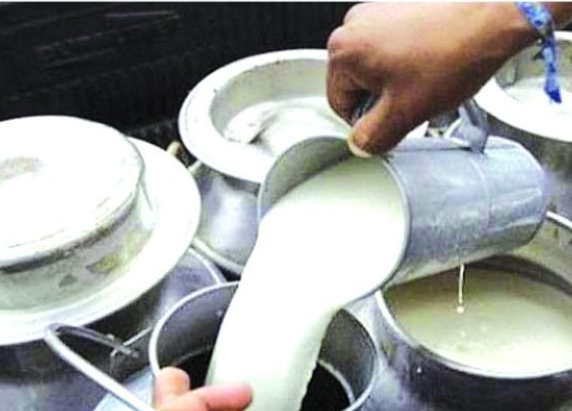The resurgence of dairy farmers’ cooperative societies in various counties has heightened competition in the multi-billion-dollar industry, posing a potential challenge to the market dominance of large milk companies.
By leveraging the installation of cooling facilities, engaging in value addition, and benefiting from rapid urbanization, these smaller dairy firms are targeting a significant portion of the three billion liters of milk consumed at the household level annually, out of a total production of 5.2 billion liters.
“The emergence of the small dairy companies has contributed to reduced cases of contaminated milk and creation of job opportunities to the youth and women,” said Simon Chelugui, the outgoing Co-operative and Micro and Small Enterprise Development Cabinet Secretary.
He added that adoption of digital systems and rapid urbanisation has greatly led to revival of small dairy farmers co-operative societies hence boosting economies in counties.
“Government has committed to guaranteeing food production and safety through the aggregation model. Reviving and establishing new dairy farmers co-operatives will spur rural economies and guarantee more liquidity to farmers,” he added during a recent interview in his office.
During a media tour across Narok, Nakuru, Baringo, and Nyandarua counties, Professor Kennedy Waweru from Co-operative University of Kenya (CUK) highlighted the significant role of revived dairy societies in bridging the gap in milk distribution to meet the needs of the growing population.
He emphasized that the promotion of small dairy farmers’ cooperative institutions has not only boosted the economy but also generated employment opportunities for youth and women.
Additionally, it has facilitated the establishment of small businesses and increased cash flow in rural economies. The resurgence of these small dairy institutions has been supported by renewed attention from the government, private sector agencies, and other stakeholders along the value chain.
Aggregation centres
“The revival of the dairy co-operative societies is contributing to wealth creation in the rural areas as farmers benefit from more income from the sale of milk. Further the aggregation centres have created the emergence of new small businesses like green groceries, transport especially boda boda and strengthened families, “said Waweru.
According to the Kenya Dairy Board (KDB), the adoption of milk aggregation has resulted in an increase in the number of dairy farmers’ cooperatives from 670 in 2021 to 770 in 2023 across various counties.
This business model has not only accelerated urbanization but also heightened the demand for safe milk. Some of these dairy societies have achieved significant market share, transforming into suppliers for major dairy companies.
An example is the Nairagie Enkare Dairy Farmers’ Cooperative Society in Narok County, which was initially established in the 1960s but faced collapse due to internal leadership disputes.
Solomon Munke, the current chairman of the society, expressed satisfaction with how the aggregation center has successfully united dairy farmers from Nairagie Enkare and its neighboring areas.
“Farmers have benefited from economies of scale in terms of procuring farm inputs and other benefits like direct market of the milk to the big boys,” he said during a recent media tour of the area. He said farmers are no longer hawking milk like before as the County Government of Narok donated to them a milk cooler thus able to preserve milk for long.
In Narok, Baringo and Nyandarua counties the establishment of dairy co-operative societies has helped in farmers adopting current farming models especially even zero grazing. This has seen the replacement of indigenous breeds with exotic dairy cows like the Friesian, Ayrshire, Jersey and Guernsey that are highly productive in terms of milk production.



